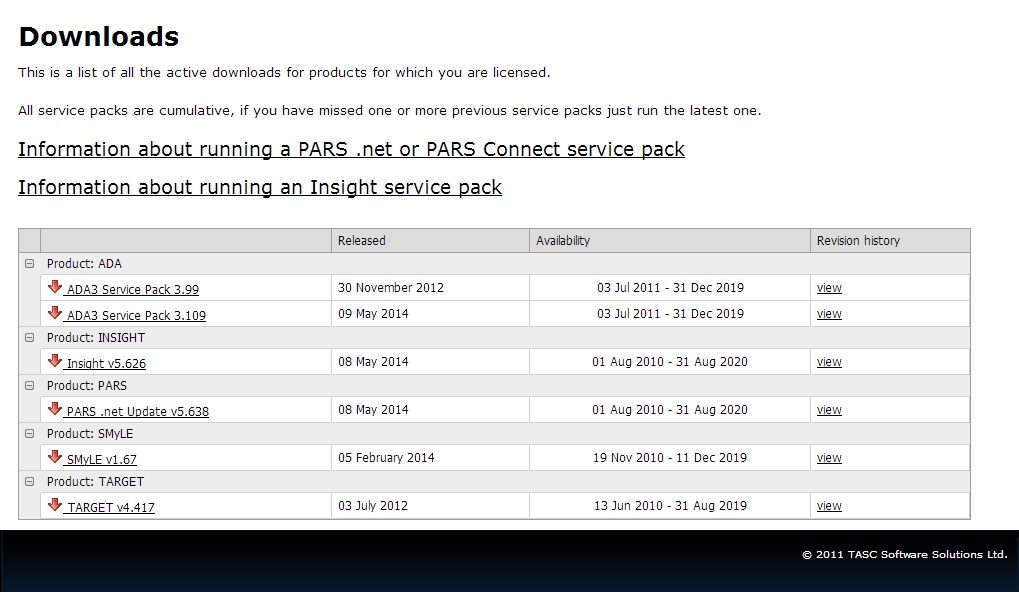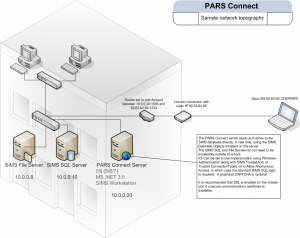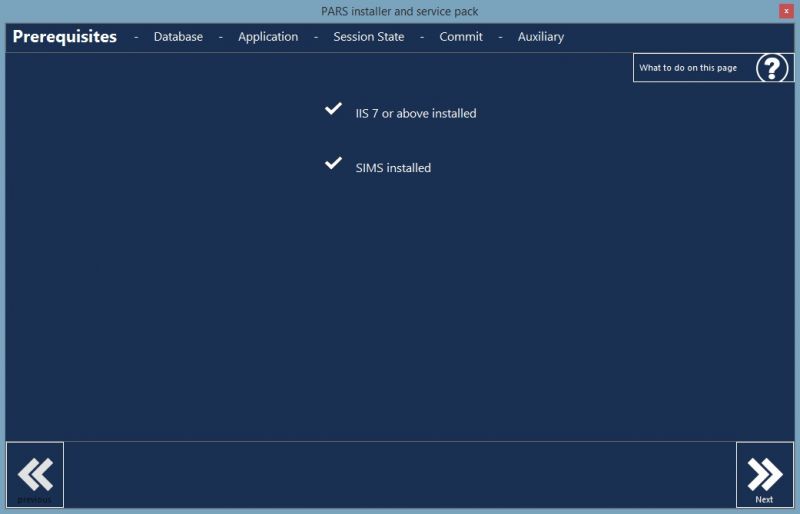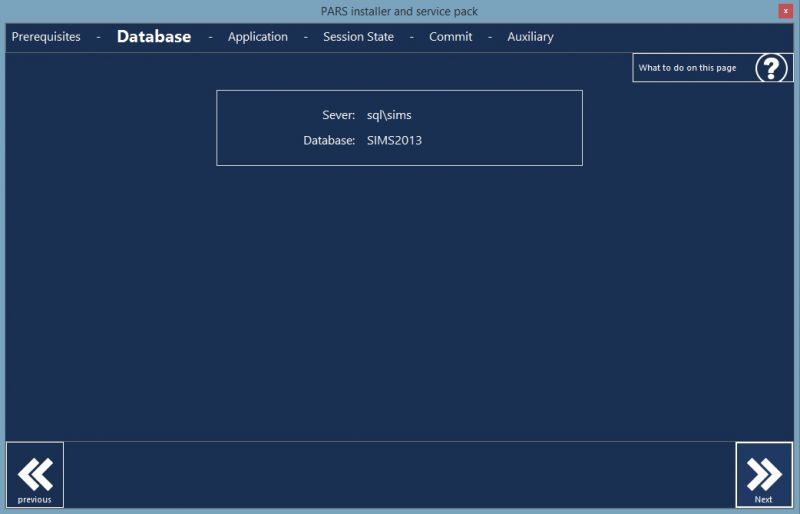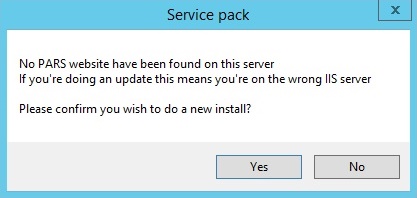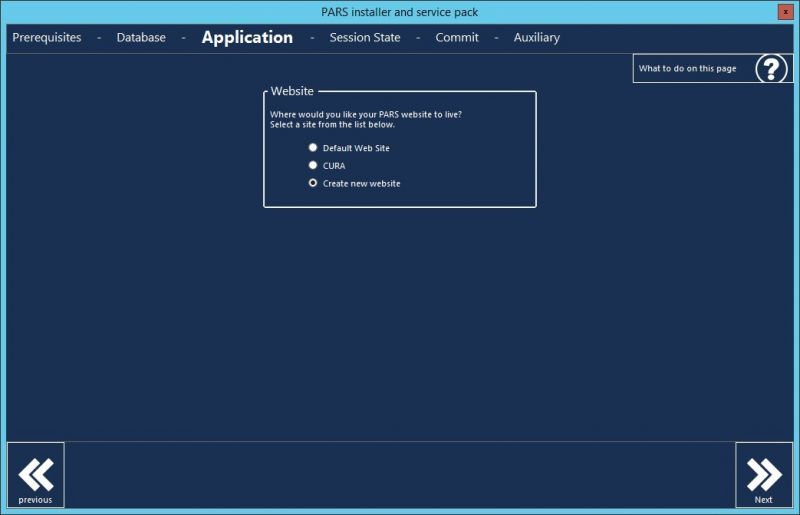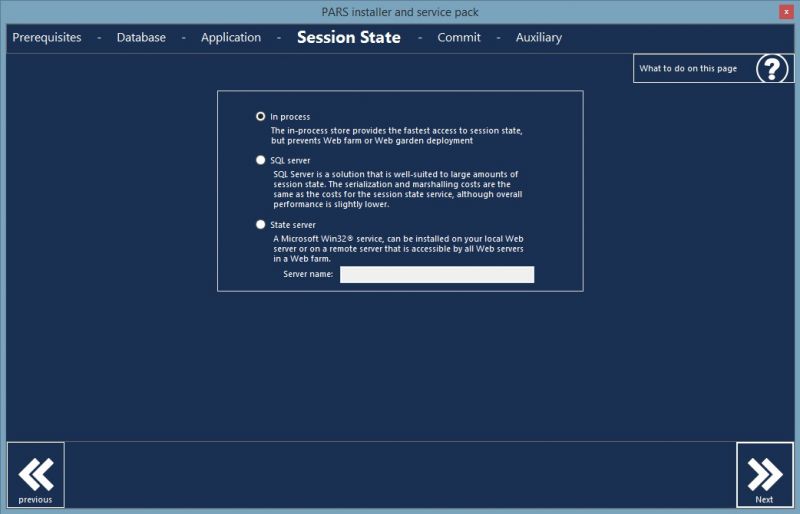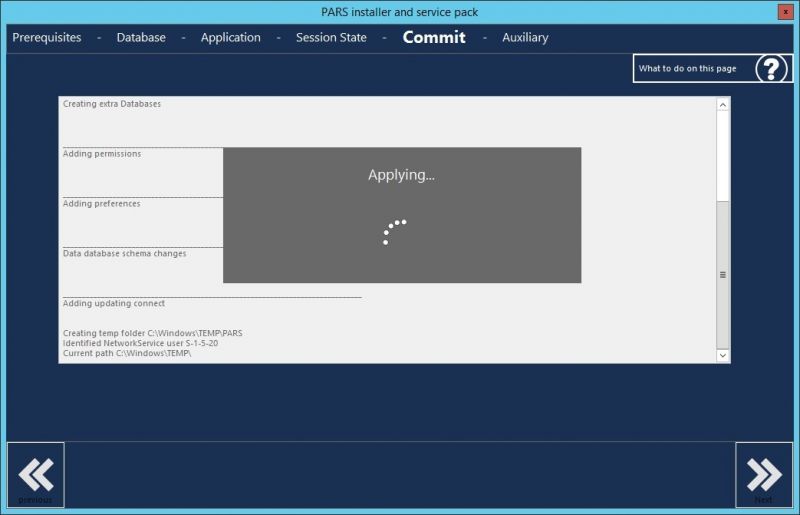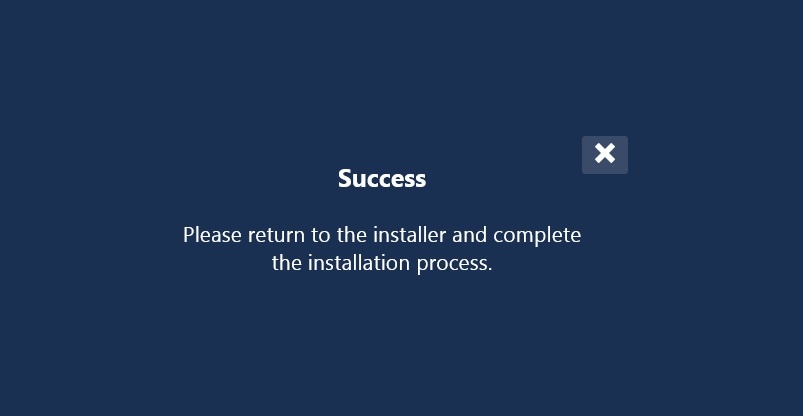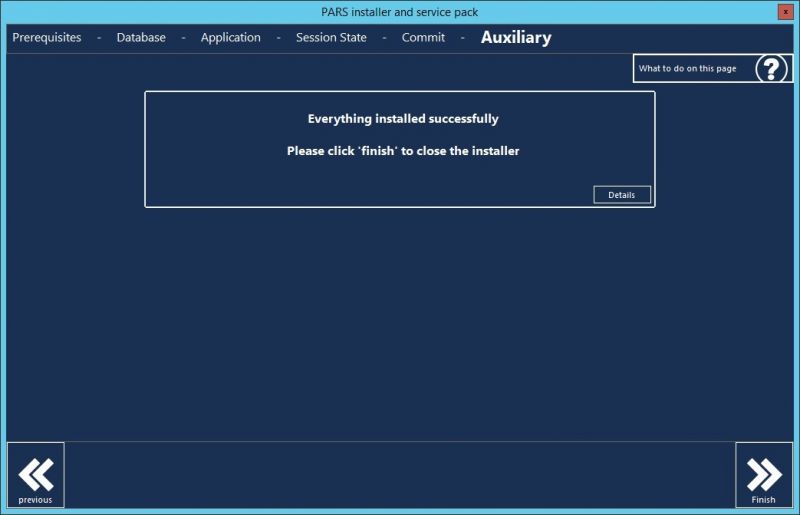Installing PARS Connect
To update PARS to a newer version, you will need to run a PARS service pack. This can be done from any workstation that has SIMS installed, and only needs to be done on one workstation. Every other workstation on the network will update PARS automatically the next time someone logs in. You do not need to kick users out of PARS to run an update. PARS Connect users will automatically receive the update once the IIS server has been updated.
To run a service pack, you will first need to download it from our website, www.tascsoftware.co.uk . Log in to our website using the login box at the top-right of the page, and then click the "Downloads" link from the top of our homepage.
The PARS update will be called "PARS .net Update vX.XXX" - where the X.XXX is replaced by the version number. Usually the updates are minor and intended for a small number of schools. If enough minor releases have been made emails will be sent out notifying users of the latest version. PARS .net and PARS Connect service packs are both contained in the same download available from our website.
If you can see two service packs for PARS, the earlier one is considered the most recent "stable" patch. The later service pack, while still stable, has spent less time in use. Check the revision history of the latest version to see the differences between the two service packs.
PARS Connect is a browser-based version of PARS. Even if you are using PARS .Net only and you have not paid for a PARS Connect licence, you still need to install PARS Connect using the Service Pack, as PARS Connect handles automation, licencing and version updates. Instructions for this are found below.
Installation is performed on an IIS server. To install PARS on your IIS server, the server will need the following components installed:
- SIMS .Net Workstation
- IIS (version 7 or higher)
- Microsoft .Net Framework (version 4.0 or higher)
Contents
Installing or Updating
Download the latest PARS Service Pack from our website, www.tascsoftware.co.uk and run it on the IIS server. A window will open - follow the instructions below to install or update PARS.
Please note that the Service Pack must be run on the IIS server, not any other machine.
Prerequisites
This tab will check that you have the required prerequisites in order to install or update PARS. If any components are missing, install them then rerun the PARS Service Pack.
Database
At this stage the Service Pack will check the connection to the SIMS database. If the Service Pack cannot find your SIMS database, you will need to find out why then resolve the issue before running the PARS Service Pack. Running SIMS on the server may provide some clues as to why the PARS Service Pack could not connect to the SIMS database.
Installation
If you are installing PARS you will be asked for your SQL System Administrator (sa) password.
Enter your SQL sa password then click "Connect".
Updating
If you are updating PARS for the first time since migrated your SIMS SQL server, you may be asked for your SQL SA password. If this is not the case and you are being asked to provide an SA password when updating PARS then do not proceed any further and contact our helpdesk immediately.
Application
This tab allows you to select the website where PARS will be installed.
Installation
You should see a message box asking whether you wish to perform a new install. If you do not see the window below, contact our helpdesk.
You will see "Default Web Site" and "Create new website", as well as the names of any other websites hosted by this IIS server. We recommend installing PARS as a new website. However if you do not know where to install the files for the PARS website, you can use the Default Web Site instead.
Updating PARS
If you see a message box like the one below, please contact our helpdesk.
You will see a list of websites here, one of which should have an asterisk (*) after its name and will already be selected. If you can see multiple sites with an asterisk their names then PARS has been installed more than once.
You should then see a window like the one below:
Session State
This tab gives options for handling the session state of logged in users. If you are unsure of which option you need to select, or do not know the pros and cons of each option, then you should choose the top option.
Commit
As long as there are no errors, you will not see this tab. The installer will skip past this tab and perform all of the steps for you.
A window will open explaining whether or not the Commit tab ran successfully. If everything was successful then the window will disappear after 5 seconds. Otherwise the window will stay open telling you what went wrong.
Auxiliary
If your window looks like the one below then the installation or update has completed successfully and you can click the "Finish" button to finalise it.
If you see the following image then the Service Pack thinks that the server you have used is not your main PARS IIS server. If this is correct, click "Finish".
If this server is your main PARS IIS server (perhaps because you have migrated your server) then select "Yes", then click "Finish".
Installing PARS .Net
PARS .Net can only be installed on SIMS workstations. To get the .msi file, download it from here [DIRECT LINK] and install it on the relevant machines.
Extras
CAPTCHA
If you wish you can set a CAPTCHA which will be required for users to log in to PARS Connect. To enable this, find the web.config file on the IIS server (by default it is found in c:\inetpub\wwwroot\pars) and open the file in Notepad. Find the lines of text below and make sure that "value" is set to "On".
<setting name="CAPTCHA" serializeAs="String"> <value>On</value> </setting>
PINS
Each user can be assigned a temporary PIN that is required along with their password in order to log in. The PIN is valid for 5 minutes after it is issued and is send to a person's email address or as an SMS message when a person tries to log in. To enable this, find the web.config file on the IIS server (by default it is found in c:\inetpub\wwwroot\pars) and open the file in Notepad. Find the lines of text below and make sure that "value" is set to "On".
<setting name="PINS" serializeAs="String"> <value>On</value> </setting>
